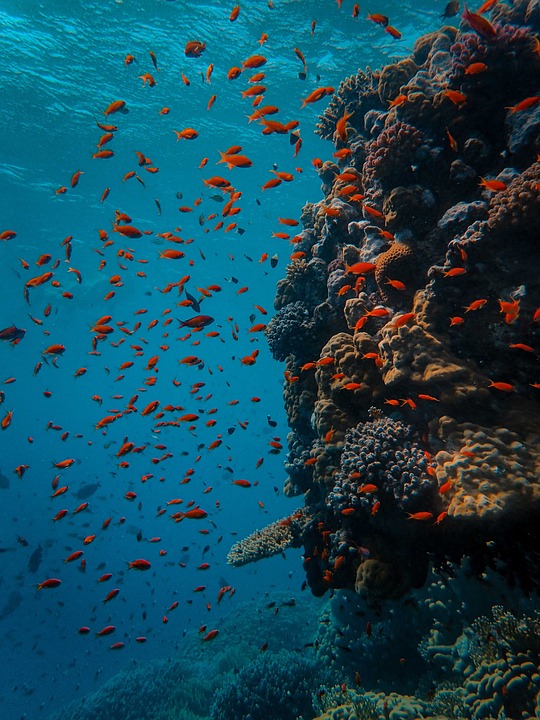Table of Contents
Introduction
Scuba diving has always been an exhilarating adventure, allowing individuals to explore the underwater world like never before. Over the years, scuba gear technology has evolved, revolutionizing the diving experience in unimaginable ways. In this article, we will explore some of the most innovative scuba gear advancements that have reshaped the way divers explore the depths of the ocean.
1. Full Face Masks
Gone are the days when traditional masks only covered the eyes and nose. Full face masks have taken scuba diving to a whole new level. These masks encompass the entire face, providing divers with enhanced visibility and improved comfort. Equipped with a built-in regulator, these masks allow divers to breathe naturally through their noses or mouths. They also offer a panoramic view, enabling divers to enjoy a wider field of vision. Full face masks have revolutionized the diving experience by reducing jaw fatigue and minimizing fogging, making them a popular choice among divers of all levels.
2. Underwater Communication Devices
Communication is crucial, especially in the underwater world where divers need to convey important messages to their buddies or dive guides. Underwater communication devices have made it possible for divers to stay in constant contact with each other, enhancing safety and ensuring a more enjoyable diving experience. These devices come in various forms, including hand signals, diver-to-diver communication systems, and even masks with integrated communication features. With the ability to communicate effortlessly underwater, divers can now share their discoveries or notify others about potential dangers, creating a more immersive and interconnected diving community.
3. Dive Computers
One of the most significant advancements in scuba gear technology is the introduction of dive computers. These compact devices have replaced traditional dive tables, providing divers with real-time data about their dive profiles and decompression limits. With integrated depth and time sensors, dive computers monitor the nitrogen levels in a diver’s body, helping them plan and execute safer dives. These devices also track vital information such as ascent rate, water temperature, and remaining bottom time. Furthermore, dive computers allow for multiple gas mixtures, enabling divers to engage in technical diving. Dive computers have greatly simplified dive planning and increased underwater safety, making them an essential tool for divers worldwide.
4. Integrated Buoyancy Control Systems (BCDs)
Traditionally, divers relied on separate buoyancy control devices and scuba vests to control their buoyancy underwater. Integrated BCDs have combined these two essential components into a single unit. These innovative BCDs incorporate an inflator, deflator, and an air bladder into a streamlined and ergonomic design. Divers can now adjust their buoyancy effortlessly and maintain a stable position in the water with a single control. Integrated BCDs have made buoyancy control more intuitive and efficient, allowing divers to focus on enjoying their dive rather than managing multiple devices.
5. Rebreathers
Rebreathers have introduced a groundbreaking technology that revolutionizes the way divers breathe underwater. Unlike traditional scuba gear, which releases exhaled air into the water, rebreathers recycle and scrub the exhaled gas, removing carbon dioxide and adding oxygen. This closed-circuit system results in extended dive times and reduced gas consumption, making rebreathers a game-changer for both recreational and technical divers. Rebreathers have opened up new possibilities for exploring deeper and longer dives, enabling divers to discover uncharted territories of the underwater world.
FAQs
1. Are full face masks suitable for all divers?
While full face masks offer numerous benefits, they may not be suitable for all divers. Some individuals may experience discomfort due to the mask’s fit or increased difficulty in equalizing pressure. It is advisable to try different models and consult with a professional before investing in a full face mask.
2. How do underwater communication devices work?
Underwater communication devices use various technologies such as ultrasonic waves or bone conduction to transmit and receive sound signals. These signals are then converted into audible signals or displayed on a digital screen attached to the device. It is important to learn and understand the specific communication system being used before venturing into dives that rely on these devices.
3. Can anyone use a rebreather?
Rebreathers are advanced diving equipment that require specialized knowledge and training. Proper certification and education in rebreather diving techniques are essential to ensure safe and responsible use of rebreathers. It is crucial to seek professional training and guidance before attempting to use a rebreather.
4. How accurate are dive computers?
Dive computers are highly accurate in monitoring dive profiles and decompression limits. However, it is important to regularly maintain and calibrate these devices to ensure accurate readings. Divers should also be aware of their own limits and make conservative decisions when encountering unexpected situations during a dive.
5. Can integrated BCDs replace traditional buoyancy control devices?
Integrated BCDs are a popular choice among divers due to their convenience and efficiency. However, personal preference and diving style play a significant role. Some divers may prefer the simplicity and redundancy of separate buoyancy control devices and scuba vests. Ultimately, it is important to choose a buoyancy control system that best suits your needs and comfort level.





